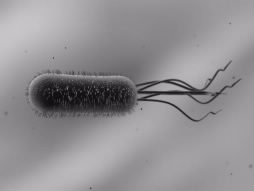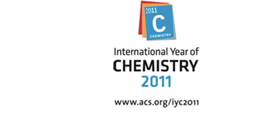EMBARGOED FOR RELEASE | March 29, 2011
“Bacterial dirigibles” emerge as next-generation disease fighters
Note to journalists: Please report that this research was presented at a meeting of the American Chemical Society
ANAHEIM, March 29, 2011 — Scientists today reported development of bacteria that serve as mobile pharmaceutical factories, both producing disease-fighting substances and delivering the potentially life-saving cargo to diseased areas of the body. They reported on this new candidate for treating diseases ranging from food poisoning to cancer — termed “bacterial dirigibles” — at the 241st National Meeting & Exposition of the American Chemical Society, being held here.
“We’re building a platform that could allow bacterial dirigibles to be the next-generation disease fighters,” said study leader William E. Bentley, Ph.D. “The concept is unique.”
Bentley explained that traditional genetic engineering reprograms bacteria so that they produce antibiotics, insulin, and other medicines and materials. The bacteria grow in nutrient solutions in enormous stainless steel vats in factories. They release antibiotics or insulin into vats, and technicians harvest the medicine for processing and eventual use in people.
Media Contact
During the meeting, March 27-31, the contacts can be reached at:
714-765-2012
Michael Bernstein
202-872-6042
m_bernstein@acs.org
Michael Woods
202-872-6293
m_woods@acs.org
The bacterial dirigible approach takes bioengineering a step further. Scientists genetically modify bacteria to produce a medicine or another disease-fighting substance. Then, however, they give the bacteria a biochemical delivery address, which is the locale of the disease. Swallowed or injected into the body, the bacteria travel to the diseased tissue and start producing substances to fight the disease.
Bentley chose the term “bacterial dirigibles” because the modified bacteria actually have the fat-cigar look of blimps and zeppelins, those famous airships of yesteryear. In addition, the bacteria seem to float like a blimp as they make deliveries.
The prototype bacterial dirigible is a strain of E. coli that Bentley and colleagues developed at the University of Maryland in College Park, where he is Robert E. Fischell Distinguished Professor and Chair of the Fischell Department of Bioengineering.
“We have created a genetic circuit that endows E. coli with targeting, sensing and switching capabilities,” Bentley explained. “The resultant cell is a bacterial dirigible – a cell that autonomously navigates and carries or deploys important ‘cargo’.”
The “targeting” molecule is attached to the outer surface of the bacteria. It gives the bacteria an ability to “hone in” on specific cells and attach to them — in this instance, the intestinal cells where other strains of E. coli cause food poisoning symptoms. Inside the bacteria is a gene segment that acts as “nanofactory.” It uses the bacteria’s natural cellular machinery to make drugs, such as those that can fight bacterial infections, viruses, and cancer.
The nanofactory also could produce signaling molecules that enable the dirigible to communicate with natural bacteria at the site of an infection. Some bacteria engage in a biochemical chit-chat, termed “quorum sensing,” in which they coordinate the activities needed to establish an infection. Bacteria dirigibles could produce their own signaling molecules that disrupt quorum sensing, preventing bacteria from starting an infection.
In work on the prototype, Bentley’s group showed that the re-engineered strain of E. coli did seek out and attach to intestinal cells growing in laboratory cultures. They also showed that the modified bacteria did produce chemical signals that triggered neighboring bacteria to make certain proteins that they don’t normally produce. The results constitute proof of principle that the “bacterial dirigibles” concept can work, he said.
Using this approach, the nanofactory also could produce chemical signals that trigger cells lining the stomach or other parts of body to synthesize natural disease-fighting substances, such as immunoglobulins. Immunoglobulins are proteins used by the immune system to identify and destroy foreign objects, such as bacteria and viruses.
“The bacterial dirigibles can send out a strong signal to which disease-fighting cells of the body can respond,” Bentley noted. “The chemical signals tell the cells to attack the body’s foreign invaders, including the bacteria that cause food poisoning.”
Bacterial dirigibles could be given to patients in the form of probiotics, live microorganisms that are beneficial to health like those found in certain kinds of yogurt, Bentley said. Doctors could also inject dirigibles into the bloodstream or directly into a diseased area, such as a tumor, he said.
The scientists acknowledge funding from the Defense Threat Reduction Agency (part of U.S. Department of Defense), National Science Foundation, and the Robert W. Deutsch Foundation.
###

fight food poisoning, cancer, and other diseases.


